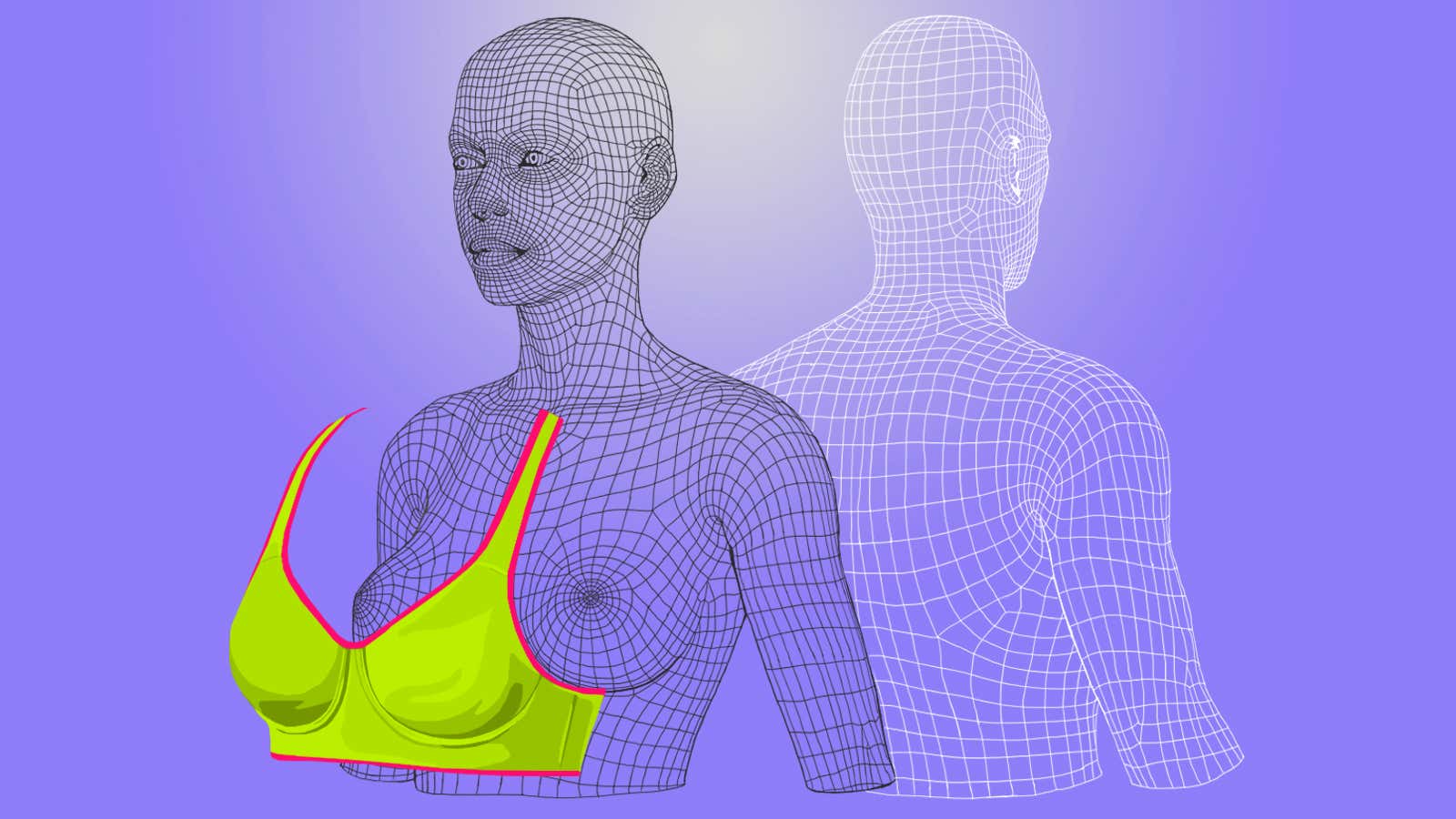The toughest part of shopping for clothes online is getting the right fit. Sizing problems are a main reason for returns, but beyond being an annoyance to customers, they’re extremely costly to retailers because of all the labor, shipping, and inventory expenses involved.
Globally, businesses lose an estimated $8.4 billion each year because of online purchases returned due to wrong sizing, according to a report by retail research firm IHL Group.
The problem is only getting worse as online shopping grows in popularity, which is in part why retailers have started partnering with 3D-body-scanning companies to help customers find the right fit the first time.
Two such companies, Bodymetrics and Styku, create 3D avatars using the sensors developed by Microsoft for its Kinect platform, which powers the motion controls in the Xbox. A customer can get scanned in a store, and software compares the measurements with the exact dimensions of garments, to find a perfect fit. Bodymetrics’ scanners are already in certain Bloomingdale’s locations in the US and at Selfridge’s in London, while Styku has teamed up with Nordstrom. The customer can then potentially shop on any of the retail sites partnered with 3D-scanning company, using the profile made in-store.
Bodi.me, which works with an extensive list of apparel brands, uses a similar method, scanning for 35 precise body measurements. Competitor Me-Ality bounces radio waves off the user to generate a 3D image with more than 100 measurements.
The drawback to this approach is that users have to find one of these booths to get scanned. There are some methods, however, for creating a digital approximation at home, without the scanner.
Bodi.me lets you upload measurements you take yourself, or the site can generate measurements from photos taken by webcam.
UPCload, which also uses your personal webcam, boasts that its measurements are as accurate as a tailor’s. And Bodymetrics is developing a smartphone app that will do the same thing as its 3D scanning booth.
One major obstacle is that, when customers use body scan measurements, retailers have to know the corresponding measurements of every garment, every season, and for every size of that garment. It’s also difficult to predict exactly how a fabric will drape, and from the shopper’s perspective, you might have to use different fit technology at different stores, which may make things more complicated, not less.
But helping online customers find the right size faster has clear benefits: retail software company True Fit, which uses information you input about brands you already own to predict how other garments will fit, reduced the return rate of a site selling premium denim from 50% to 20% among 400,000 users.
That sort of decrease makes a major difference. Nick Robertson, the founder and former chief executive at ASOS, Britain’s largest online-only retailer, estimated that just a 1% drop in returns would translate into $16 million added to the company’s bottom line.
Styku also believes this type of technology makes customers much more likely (pdf) to make a purchase.
For a company like Amazon, which is poised to become the largest clothing retailer in the US, not to mention all the independent retailers fighting for profits online, the dollar value at stake is enormous.
And of course, for consumers, getting the right size the first time is priceless.
